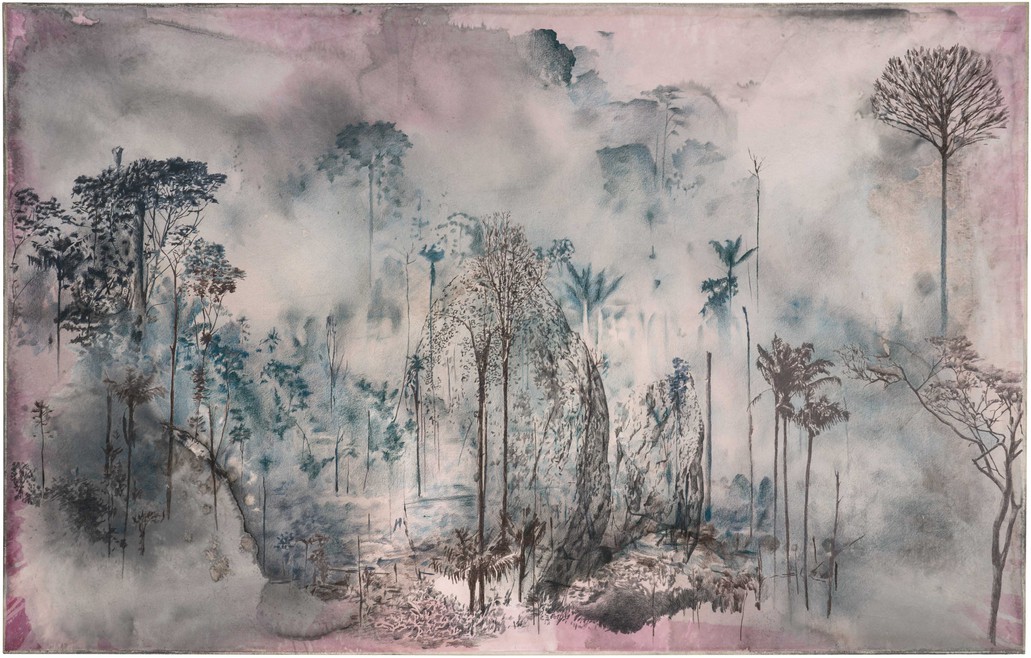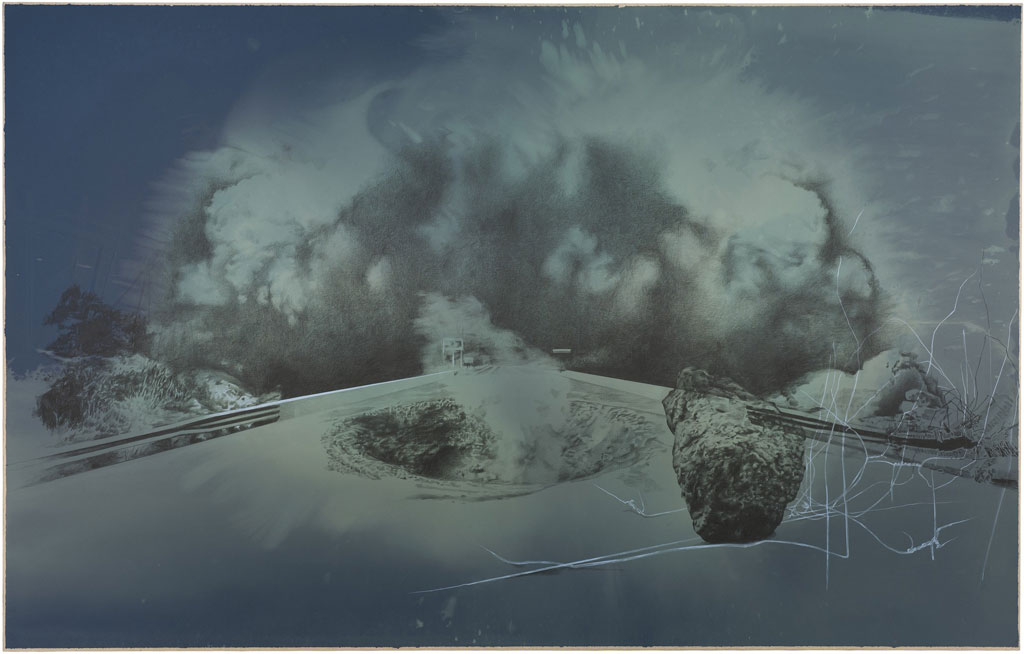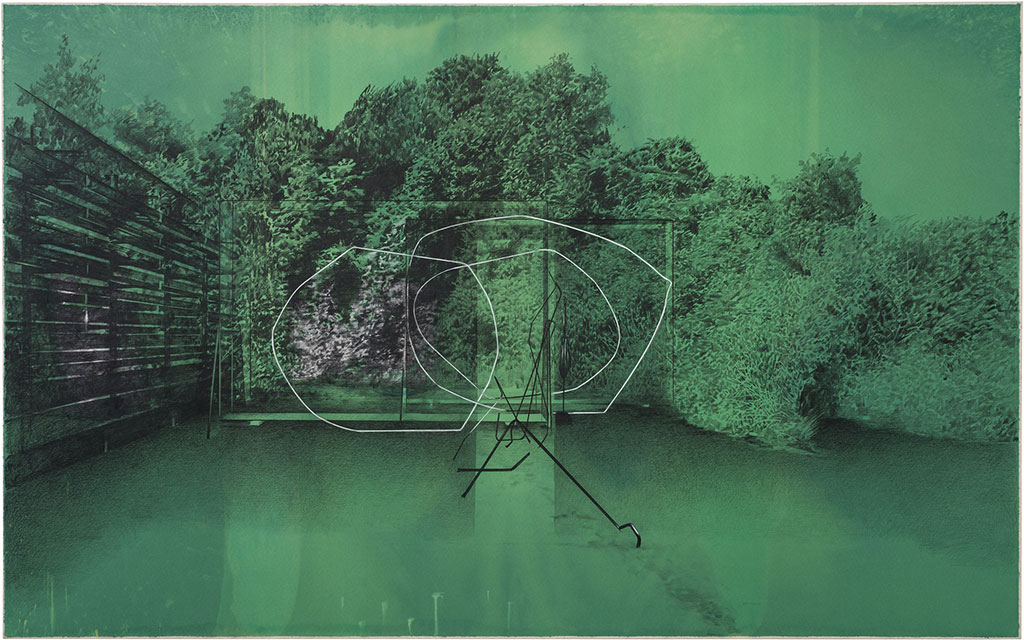ART-PRESENTATION: Tatiana Trouvé-On the Eve of Never Leaving
 In her work Tatiana Trouvé limns the boundaries between the mental and the physical, where material space and form converge with immaterial time and memory. Her situations combine intricate scenographic drawings, sculptures both linear and three-dimensional, and spaces that hint at invisible dimensions. Whether found or created, Trouvé’s “environmental dramas” are melancholy yet highly charged, palimpsests containing echoes of other lived spaces and realities, which oscillate between the real, the imaginary, and the phantasmic.
In her work Tatiana Trouvé limns the boundaries between the mental and the physical, where material space and form converge with immaterial time and memory. Her situations combine intricate scenographic drawings, sculptures both linear and three-dimensional, and spaces that hint at invisible dimensions. Whether found or created, Trouvé’s “environmental dramas” are melancholy yet highly charged, palimpsests containing echoes of other lived spaces and realities, which oscillate between the real, the imaginary, and the phantasmic.
By Efi Michalaru
Photo: Gagosian Archive
In her large-scale drawings, cast and carved sculptures, and site-specific installations, Trouvé assesses the relationship between memory and material, pitting the ceaseless flow of time against the remarkable endurance of common objects. Combining fragments from both natural and constructed ecosystems, she creates hauntingly familiar realms in which forest, street, studio, and dream coalesce. New drawings and sculptures by Tatiana Trouvé are on presentation in her solo exhibition “On the Eve of Never Leaving”. The title of the exhibition ” is a translation of “Na Véspera de Não Partir Nunca,” the title of a poem by Álvaro de Campos, one of the many heteronyms of the Portuguese writer Fernando Pessoa. De Campos’s deeply melancholic writings often deal with notions of time and nothingness; they are hymns to the existential void. Trouvé, attuned to the ways in which journeys, physical and spiritual, can circle back on themselves—visually collapses past and future, echoing Pessoa’s linguistic paradoxes in uncanny material form. The exhibition includes new drawings from two related series: “Les dessouvenus” (2013- ) and “The Great Atlas of Disorientation” (2019- ) installed in a metal armature that itself functions as a linear drawing through space. To make “Les dessouvenus”, Trouvé first plunges large sheets of colored paper into bleach, then allows the unpredictable, even caustic, boundaries of each stain to provide a loose structure for complex environmental dramas that she draws in pencil. In “The Great Atlas of Disorientation” she uses watercolor to recreate the bleached effects in “Les dessouvenus“ which variously recall smoke, halos, ghosts, or mushroom clouds. The slight differences between the real and contrived stains cause Trouvé’s responsive drawings to take off in new directions, as she pulls from a wide range of sources including her personal archive of tree photographs, vintage x-rays, her own previous sculptures, and works by artists she admires, such as American sculptor Beverly Buchanan. The Great Atlas of Disorientation series thus underscores the impossibility of replicating a succession of chance events. The revelatory power of the tree is examined further in “The Shaman” (2018), a life-size bronze cast of an oak, partially submerged in a pool of water beneath a ruptured concrete floor. Water trickles from the muddied tangle of roots and a limp stack of patterned cushions, carved in marble, granite, and onyx, sits in the pooling water, raising questions about the causes and consequences of this tectonic disruption. For Trouvé, the shaman is an expert in disorientation, seamlessly traveling through space and time, shifting between species and languages, and possessing multiple identities. Trouvé’s sculpture also inhabits many worlds at once, poised at the threshold between decay and new life, growth and debris. In the corner nearby, a small cast-bronze transistor radio sits beside a manhole cover. These objects, though benign, are portals to unseen worlds.
Info: Gagosian Gallery, 456 North Camden Drive, Beverly Hills, Duration: 1/11/19-11/1/20, Days & Hours: Mon-Sat 10:00-18:00, https://gagosian.com


